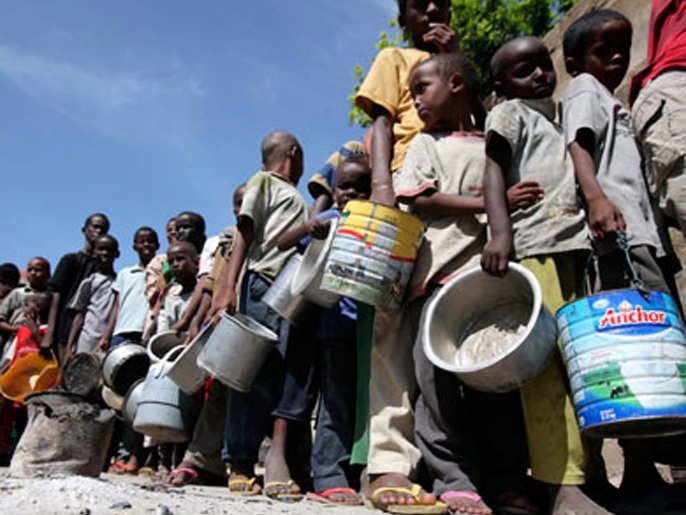The pressure on staple foodstuffs across Africa, driven by soaring global commodity prices, has compounded fears of a global food crisis on the continent and a revival of the hunger riots of 2007-2008.
And the French newspaper "Le Monde" said that the concern is increasing in severity with the rise in global food prices for the fourth consecutive month, reaching their highest level since July 2011, according to the monthly scale published on the second of December by the World Organization. Agriculture and Food (FAO), especially that this indicator - which collects prices in international markets for many basic products such as grains, dairy products, sugar, oils, meat and others - rose in one year by more than 27%.
The newspaper pointed out - in a report by Marie de Verges - that this inflation will lead to an increase in the bill of African countries that depend on imports to feed their population. Wheat prices are now at a level not seen since May 2011.
The newspaper warned that this situation poses a challenge to these countries in which families can spend up to two-thirds of their income on food, and then these high prices revive the specter of the 2007-2008 food crisis, when the prices of wheat and other grains doubled, and violent riots erupted because of Hunger is all over the world and especially on the African continent, from Dakar to Ouagadougou to Cairo.
the burden of the epidemic
"The situation is worrying, but it is more complex than it was in 2008, because it is more than what was at the time of high prices with other crises such as Covid-19, major climate disruption, and conflicts," says Jean Sinahon, an economist at the FAO Regional Office for Africa. Many”, especially that the epidemic caused huge losses in food systems, by causing job and income loss, severely shaking purchasing power, depreciating currencies in some countries, and inflation.
The health crisis - as the newspaper points out - directly affected production, after supply chains for agricultural inputs, such as fertilizers, seeds and pesticides, were disrupted, which led to a decrease in African production of corn and rice, as well as an increase in the cost of sea freight that comes on top of high prices. Imported foodstuffs.
abnormal posture
In this context, restrictive measures and the closure of land borders have disrupted access to agricultural labor and impeded the movement of herds, aided by the insecurity in the many conflict areas, such as Burkina Faso, Mali, northern Nigeria and Ethiopia, which is witnessing a grinding war that blocks migration routes and prevents many farmers from cultivating their lands.
To the previous factors are added climatic crises, such as the raging drought in many regions of Kenya, Ethiopia and Somalia, and the poor distribution of rains that West Africa has suffered, to complete the darkening of the picture with the presence of "difficulties in all parts of the chain, from production to the final consumer," says Olu Seb, a program consultant. Global food in Central and West Africa, indicating an "abnormal situation" in these two sub-regions.
33 African countries
The newspaper asked: Are we heading towards a major food crisis on the continent?
Jan Sinahon replied that this is not certain because the price of rice did not rise as happened in 2007-2008, but he nevertheless expressed his concern that food prices are still very high in the region, even in the harvest season, and said that he believes that "the most Sensitivity will be before the next harvest", in July-August 2022, when grain stores are empty waiting for the next harvest, but this crucial moment "may come as early as March", according to Olu Seb.
The newspaper concluded that the food crisis is already present in some parts of the continent, there is a famine raging in southern Madagascar and another in the Ethiopian Tigray region, and 33 African countries - according to the Food and Agriculture Organization - now need external food aid.

